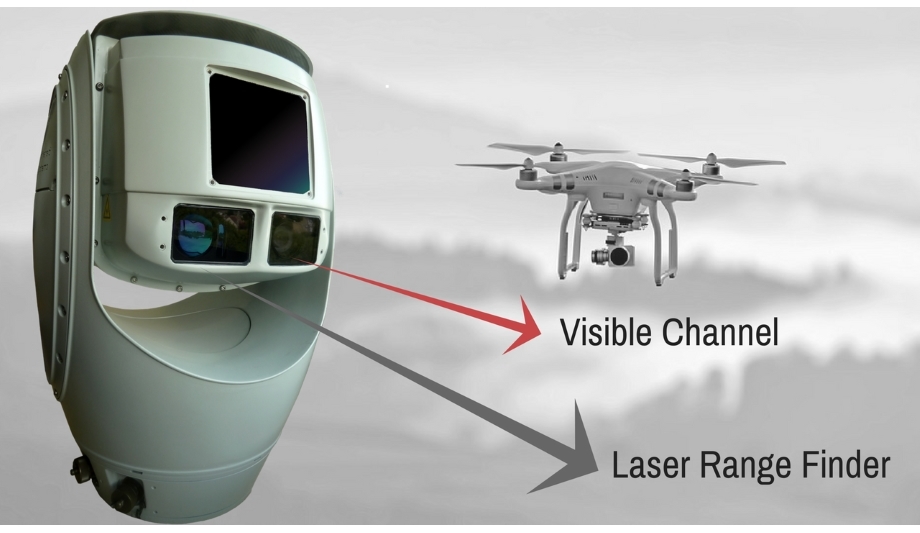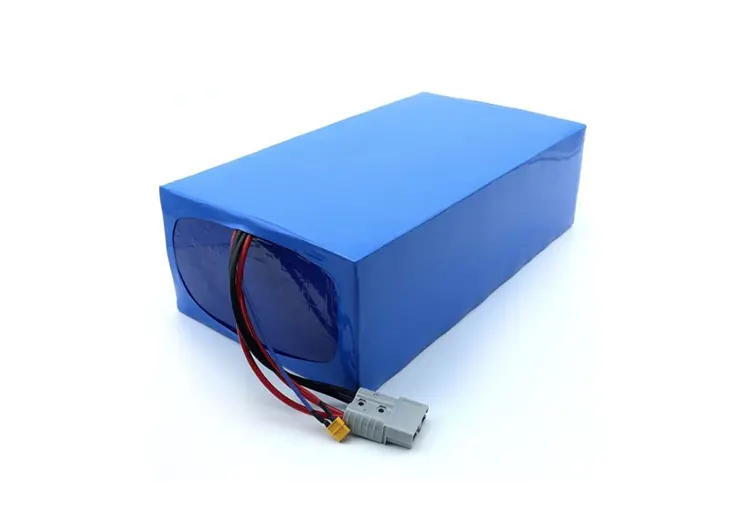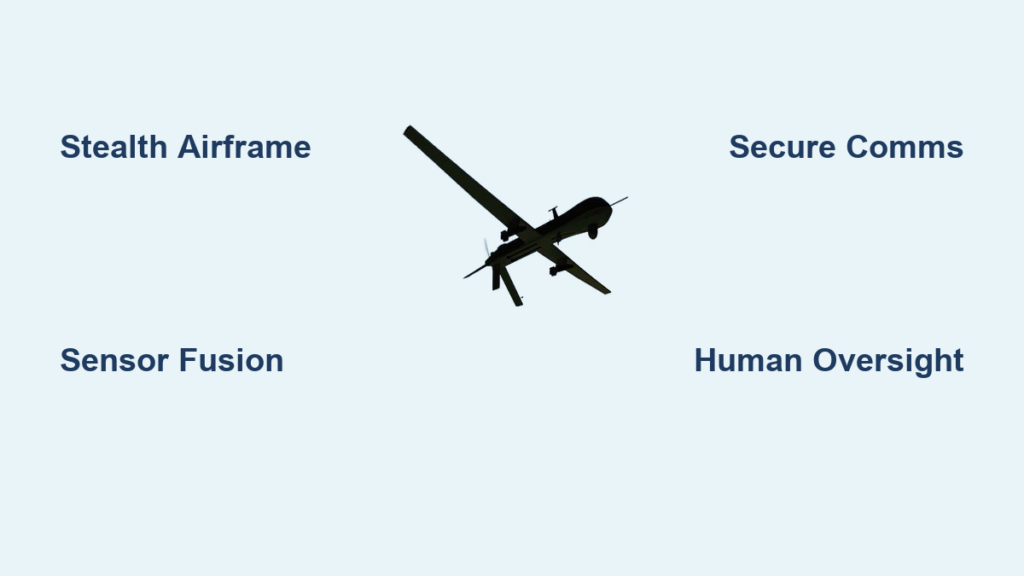Picture a soldier safely positioned miles from danger, yet seeing enemy movements in crystal-clear detail. This isn’t science fiction—it’s the reality of modern warfare where understanding how does a military drone work has become essential knowledge. These unmanned systems have transformed battlefields by delivering critical intelligence, precision strikes, and persistent surveillance without risking human lives in the cockpit.
Military drones operate through a sophisticated integration of aerospace engineering, sensor technology, and secure communications that would have seemed impossible just two decades ago. From palm-sized reconnaissance units to strategic bombers with 40-hour endurance, these systems provide capabilities that fundamentally change how militaries operate across every domain of conflict.
Learning how does a military drone work reveals the intricate balance between human oversight and machine capability that defines 21st-century warfare. This guide breaks down the actual technology and processes behind these critical battlefield assets.
Military Drone Airframe Design & Flight Mechanics

Military drones achieve flight through carefully engineered airframes that balance stealth, endurance, and payload capacity. Tactical drones like the Aero-Sentinel G2 use carbon-fiber composites and radar-absorbent materials shaped to minimize detection, while strategic platforms such as the MQ-9 Reaper employ turbo-prop engines burning heavy fuel for extended operations.
Flight control relies on triple-redundant inertial measurement units working with INS/GPS navigation systems. This combination allows drones to maintain precise positioning even when GPS signals are compromised. Environmental hardening ensures operation from -20°C to +55°C with IP67 sealing against dust and moisture—critical for reliability in combat zones.
Key flight components you should know:
– Propulsion systems: Electric motors (tactical) vs. turbo-prop engines (strategic)
– Navigation redundancy: Multiple backup systems for GPS-denied environments
– Environmental protection: Sealed components that withstand battlefield conditions
– Stealth shaping: Airframes designed with reduced radar cross-section
Without these foundational elements, military drones couldn’t maintain the persistent presence that makes them so valuable on modern battlefields.
Sensor Technology That Powers Battlefield Intelligence

The true value of military drones lies in what they can “see” and process. Modern systems deploy multiple sensor types simultaneously to gather comprehensive battlefield intelligence. Electro-optical sensors deliver 4K daylight imaging with 120× digital zoom, while cooled infrared sensors achieve <50 mK sensitivity for thermal detection even in complete darkness.
How Drone Sensors Identify Targets in Real Time
Military drones process sensor data through multiple channels simultaneously. Synthetic aperture radar enables all-weather mapping and moving-target indication, while laser systems provide ranging accuracy within one meter and target designation capability. Electronic warfare suites include RF jammers and SIGINT receivers for communications interception.
When operating in contested environments like Ukraine, drones use AI-assisted target cueing that highlights potential threats, but human operators always verify positive identification before any action. This combination of machine processing and human judgment creates the reliable intelligence that has reduced artillery targeting cycles from 30 minutes to just 3-5 minutes in recent conflicts.
Secure Communication Links: Controlling Drones from Miles Away

Understanding how does a military drone work requires examining the invisible lifeline connecting operator to aircraft. Military drones use multiple communication layers with strict security protocols. Strategic drones utilize Ku-band SATCOM for global reach, while tactical units employ C-band or X-band directional antennas effective up to 250 kilometers.
Critical security features in drone communications:
– AES-256 encryption with frequency-hopping spread spectrum
– Anti-jam waveforms like HAVE QUICK II that change channels 100+ times per second
– GPS-denied navigation using visual odometry and SLAM when satellite signals are compromised
– Secure bootloaders preventing malware injection through firmware updates
Emerging LiFi optical systems now provide 1 Gbps transmission with <1 millisecond latency, though requiring clear line-of-sight. Variable Height Antenna systems extend range by elevating relay nodes 100 meters above ground level, overcoming terrain masking in mountainous regions where traditional signals fail.
Precision Strike Sequence: From Target ID to Weapon Release
For armed missions, military drones follow strict protocols that balance speed with accuracy. The target engagement sequence begins with AI-assisted target cueing that identifies potential threats, but human operators always verify positive identification before authorization.
Step-by-Step Drone Strike Process
- Target confirmation through multiple sensor feeds
- Laser designation providing precise targeting coordinates
- Missile lock acquisition with continuous tracking
- Launch authorization requiring dual operator verification
- Weapon release with mid-flight guidance adjustments
- Battle damage assessment using high-resolution imaging within 5-10 minutes
This sequence explains how the MQ-9 Reaper fleet achieved over 4 million flight hours with more than 6,000 Hellfire missile shots while maintaining less than 2% collateral damage through human-verified positive identification.
Visual and Acoustic Stealth Techniques in Combat Drones
Military drones employ multiple stealth techniques to avoid enemy detection systems. Visual stealth uses matte neutral colors matching operational environments, while acoustic suppression employs low-RPM high-torque motors with scimitar-shaped propellers. Infrared signature reduction includes low-emissivity coatings and exhaust cooling systems.
Effective drone stealth features:
– Propeller shrouds that decrease both noise and visual detection
– Size reduction making tactical units extremely difficult to identify beyond 500 meters
– Low-probability-of-intercept waveforms minimizing electronic emissions
– Radar-absorbent materials in airframe construction
These features allow drones like the Aero-Sentinel G2 to operate with noise levels below 45 dB at 50 meters—quieter than normal conversation. In urban environments, this near-silent operation enables critical reconnaissance without alerting adversaries.
Power Systems Enabling Extended Combat Missions

Military drones achieve remarkable endurance through advanced power solutions tailored to mission requirements. Tactical drones use 21700 lithium-ion cells achieving 350 Wh/kg energy density, with smart battery packs including individual cell monitoring and hot-swap capability. These systems deliver 80+ minutes of flight time while maintaining reliability in extreme conditions.
Strategic platforms achieve 40+ hour endurance through turbo-prop efficiency and large fuel capacity. For specialized missions, tethered operations provide continuous 1 kW ground-supplied power enabling 50-hour missions with zero RF emissions—a critical advantage for sensitive surveillance operations.
Quick-turn procedures enable battery swaps and refueling in under 15 minutes for tactical units, allowing rapid redeployment. Proper storage protocols maintain batteries at 30-70% state of charge for maximum lifespan, with temperature-controlled charging stations preventing degradation in field conditions.
Human-Machine Control Balance in Military Drone Operations
Modern military drones operate at autonomy levels 2-3, creating an effective partnership between human operators and machine capabilities. Level 2 systems handle waypoint navigation and altitude maintenance automatically, while Level 3 adds sensor-based obstacle avoidance and adaptive routing capabilities.
Ground control stations feature dual operator stations separating pilot and payload operator functions. Mission planning software enables complex operations including grid searches and automated weapon release parameters, but critical decisions always involve human oversight.
Future Level 4 systems will feature AI target recognition with operator authorization required for lethal action, while full Level 5 autonomy remains theoretical due to ethical and legal restrictions on lethal decision-making without human oversight. This careful balance ensures drones provide battlefield advantages while maintaining appropriate human control.
Understanding how does a military drone work reveals a sophisticated convergence of technologies working in seamless coordination. From carbon-fiber stealth airframes to quantum-encrypted communications, each component contributes to capabilities that extend human reach while protecting lives on the battlefield.
As drone technology continues advancing, expect to see greater AI integration, swarm capabilities, and enhanced human-machine teaming that will further transform military operations. However, the fundamental principles of reliable communication, precise sensor operation, and appropriate human oversight will remain central to how military drones function in future conflicts.
For military personnel and defense observers alike, grasping these operational realities is essential for understanding modern warfare dynamics. The next time you see drone footage from a conflict zone, you’ll recognize the complex engineering and careful protocols that made that intelligence possible—all while keeping human operators safely out of harm’s way.



